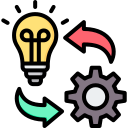This involves planning, assembly and running of carefully chosen test cases to ensure that DSS functionality and content delivery operate as intended.
Test cases are based on scenarios that check whether the intended functionality of your software operates correctly. The test case is a set of steps to be carried out to test whether the functionality works as expected.
Examples of test cases (in increasing order of complexity):
Example test case ID 1
Step 1. Enter correct URL for homepage of the DSS toolkit.
Result: Check that homepage loads with tiles representing the required sections of the website.
Example test case ID 2 – using visual pathway tool
Step 1. Click on link to access a visual pathway.
Step 2 Click on “I” information icon within a node in the pathway.
Result: Check that information panel loads with all text visible and formatted as intended.
Example test case ID 3 – using question and answer tool
Step 1. Enter correct URL to navigate to Lower Urinary Tract Assessment Tool for people over 65.
Step 2. Click on “Get Started” button.
Result: Check that page loads with question “Is a urinary catheter present?”
Step 3: Select “Yes” radio button.
Result: Check that page loads with the correct list of symptoms for patients with a urinary catheter in place.
Example test case ID 4 – using clinical calculator.
Step 1. Enter correct URL to navigate to NEWS2 calculator (Early Warning Score calculator)
Steps 2-9: These steps will prompt selection of specific ranges or values from lists for respiratory rate, oxygen saturation scale, oxygen saturation, breathing with air or oxygen, systolic blood pressure, pulse, consciousness or temperature.
Result: Check that page loads with correct risk score and recommendations for values selected.
For algorithmic DSS, such as those produced by the question and answer tool and clinical calculators, you will often need to work out many permutations of values to produce a complete set of test cases. You can ask for help and advice from the Right Decision Service team. In some cases, it may be recommended to seek technical support for carrying out automated test cases.
A spreadsheet listing your test cases and results of testing is a good way to document your functional testing and to quickly identify any issues.
Note that the core functionality of the underpinning Right Decision Service platform – e.g. search and browse – has already been tested at development stage. Your testing should focus on the content and functionality you create using the RDS tools.

